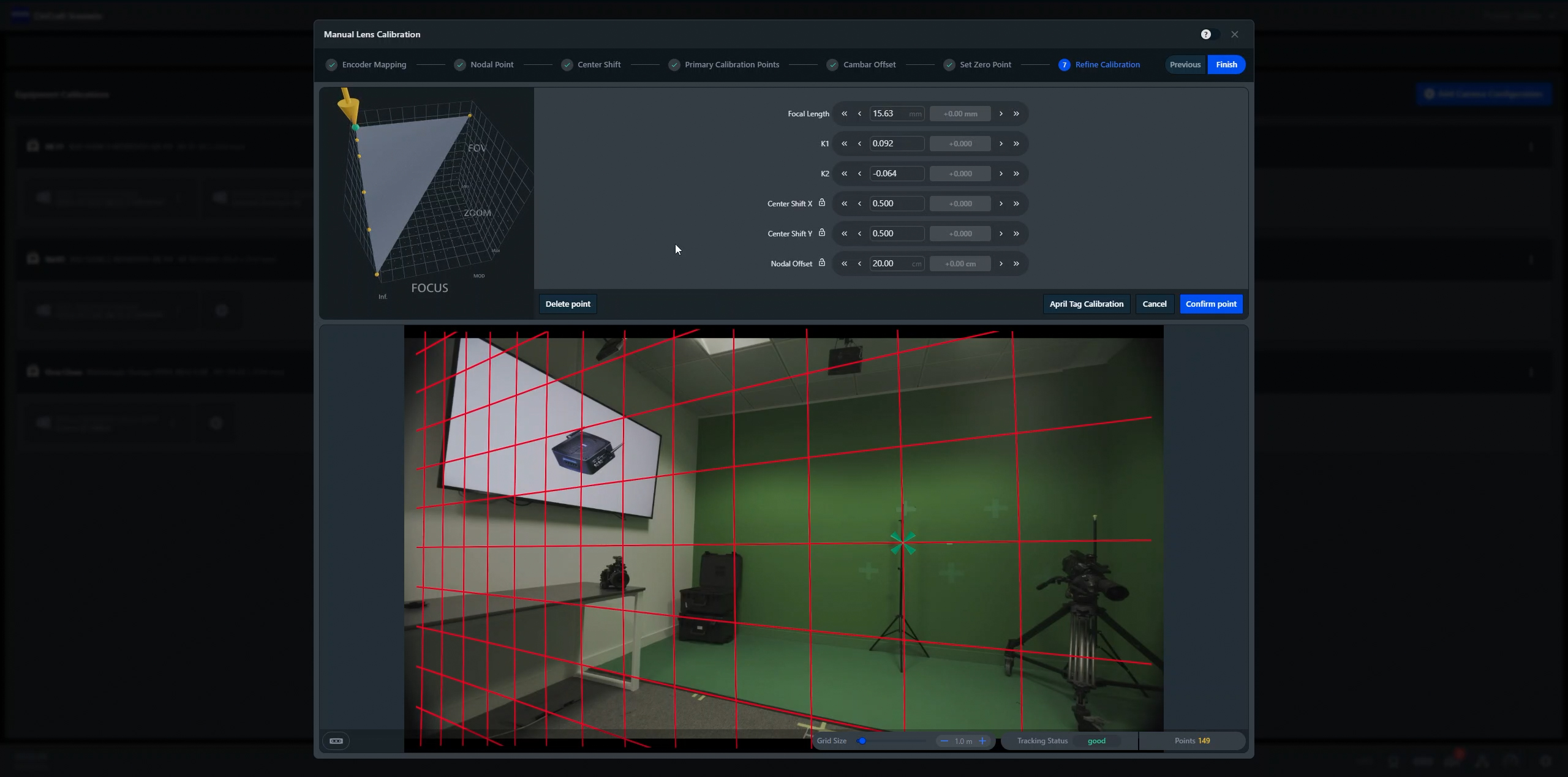Zeiss Releases CinCraft Scenario 2.1 Camera Tracking System
Software updates feature full manual calibration for any spherical prime or zoom lens

Zeiss Group said it has made a significant update to its Zeiss CinCraft Scenario camera tracking system. With the latest software release, 2.1, the solution now allows users to manually calibrate lenses when no prefilled template is available. This opens the possibility to work with any spherical lens.
“With this software update, we are greatly increasing the flexibility in lens choice and compatibility with virtual production stages and broadcast applications,” said Christophe Casenave, head of business unit, cinematography at Zeiss.
In announcing the upgrade, Zeiss said that the CinCraft Scenario calibration process is guided and designed to be easy to conduct.
Users can now initiate a calibration by inserting lens details (e.g. engraved barrel marks like focus, iris and zoom) into the CinCraft Scenario Software and performing an initial calibration using a chart. They can then adjust and fine-tune the calibration until satisfactory results are achieved. The calibration steps for spherical lenses are designed to be straightforward and easy to deploy while still delivering excellent results.
“This update allows CinCraft Scenario users to create a lens template from scratch with ease, enabling tracking with any third-party lenses,” Casenave said.
With the latest software release, users can also manually enter measurements for the CamBar to main camera offset instead of relying on the automated Offset Assistant.
“This offers a faster method to update the offset without needing the chart method, which can sometimes be restrictive on set," Tom Evans, product manager for Zeiss CinCraft, said. Users can quickly input manual measurements without temporarily switching to a wider lens and can store commonly used offsets, making it easy to apply these values when switching between known camera setups.
The professional video industry's #1 source for news, trends and product and tech information. Sign up below.
Moreover, CinCraft Scenario 2.1 now automatically detects the clip name on ARRI and Sony cameras and stores this alongside the tracking data, simplifying the process of matching the correct take in Export. For cameras that don’t provide a clip name automatically, users can manually input it during recording.
The Zeiss CinCraft Scenario system also features an enhanced Export 2.0 update.
“With Export 2.0 we are increasing comfort and value in use of tracking data for post-production,” Evans said. The new Undistortion ST Maps can be used to undistort camera plates, eliminating the need for shooting lens grids during camera prep. When paired with the matching distortion maps from Export, this allows for easy reapplication of lens distortion in the final stages of compositing.
Additionally, the Export Point Cloud provides VFX artists with data detailing camera position during production. The point cloud contains all the features that were used for tracking and will help visualize the space around the camera, which makes aligning the camera in post-production much easier. The point cloud will be provided in two formats: PTS for Unreal Engine and FBX for Nuke.
The new release is available for all users starting Nov. 7. Several online live demo sessions with product specialists going through the calibration process will be held in the weeks to come.
The full release notes for CinCraft Scenario 2.1 can be found at: zeiss.ly/scenario2-1.
CinCraft Export 2.0 can be downloaded here: https://zeiss.ly/export-download.
George Winslow is the senior content producer for TV Tech. He has written about the television, media and technology industries for nearly 30 years for such publications as Broadcasting & Cable, Multichannel News and TV Tech. Over the years, he has edited a number of magazines, including Multichannel News International and World Screen, and moderated panels at such major industry events as NAB and MIP TV. He has published two books and dozens of encyclopedia articles on such subjects as the media, New York City history and economics.

